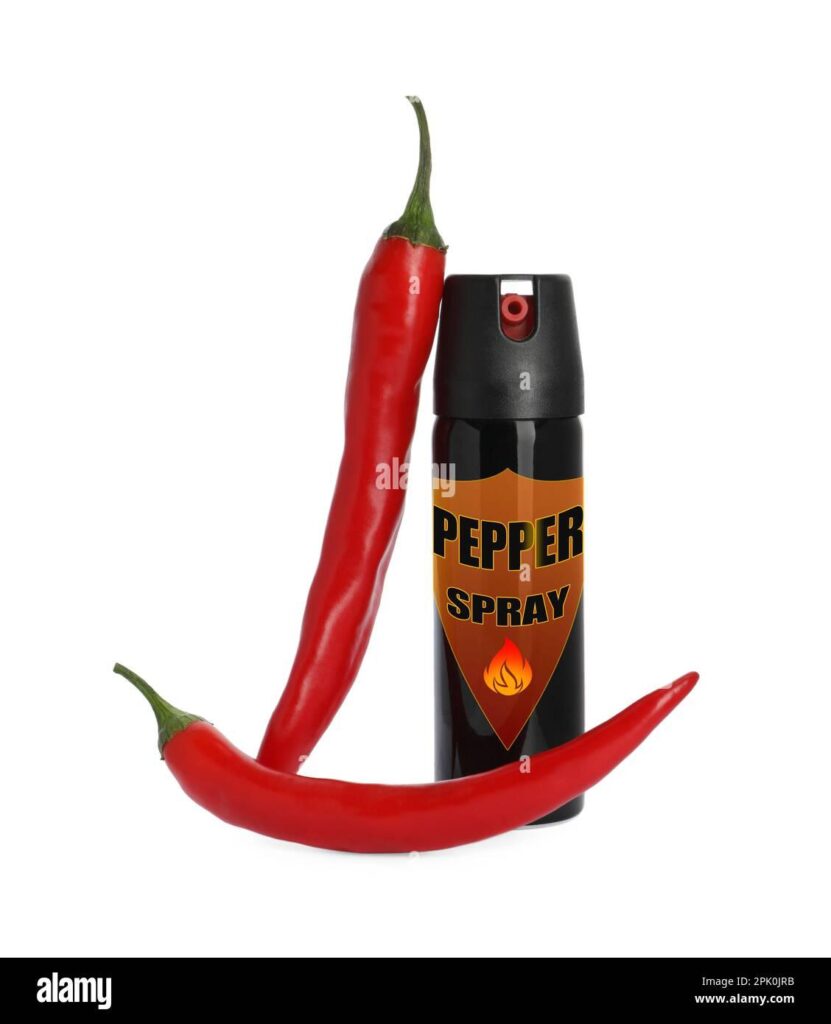Table of Contents
- Understanding the Chemical Components of Chili Peppers for Pepper Spray Production
- Extraction Techniques to Maximize Capsaicin Concentration
- Formulating a Safe and Effective Pepper Spray Solution
- Storage and Handling Best Practices for Homemade Pepper Spray
- In Retrospect
Understanding the Chemical Components of Chili Peppers for Pepper Spray Production
Chili peppers contain a group of chemical compounds known as capsaicinoids, which are responsible for their intense heat and irritation properties. Among these, capsaicin stands out as the primary active ingredient used in pepper spray formulations. Capsaicin interacts with sensory receptors in the skin and mucous membranes, triggering a burning sensation and inflammation that temporarily incapacitates an attacker. In addition to pure capsaicin, natural extracts often include related compounds like dihydrocapsaicin and nordihydrocapsaicin, which contribute to the overall pungency and effectiveness of the spray.
When preparing pepper spray, manufacturers focus on isolating and concentrating these chemical components to ensure a potent and reliable product. Typically, an oleoresin capsicum (OC) extract is produced by soaking dried chili peppers in a solvent that captures the capsaicinoids. The resulting mixture combines:
- Capsaicin concentration: Determines the strength and duration of the spray’s effect.
- Carrier solution: Usually a water or alcohol base to enable proper dispersion through spray nozzles.
- Propellants or emulsifiers: Help stabilize the solution and improve its reach and impact.
Extraction Techniques to Maximize Capsaicin Concentration
To achieve a high capsaicin concentration, extraction methods must focus on efficiently isolating the active compound while minimizing impurities. One of the most effective techniques is solvent extraction, where chili peppers are soaked in organic solvents like ethanol, acetone, or hexane. These solvents dissolve the capsaicinoids, allowing for an easy separation from the plant material. The extract is then filtered and the solvent evaporated, leaving behind a potent capsaicin-rich concentrate. Selecting the right solvent and carefully controlling the temperature and duration of extraction are critical factors that influence the purity and strength of the final product.
Other innovative methods include supercritical CO2 extraction, which uses carbon dioxide at high pressure and temperature to selectively extract capsaicin without the use of harsh chemicals. This eco-friendly approach not only preserves the bioactive properties but also produces a highly purified extract suitable for pepper spray formulations. Additionally, mechanical processes such as ultrasonic-assisted extraction can enhance yield by breaking down the cell walls of chili tissue, liberating more capsaicin. Key considerations to maximize extraction efficiency often involve:
- Using dried versus fresh chili for consistent capsaicin levels
- Optimizing particle size of the chili powder to increase surface area
- Maintaining low temperatures to prevent degradation of heat-sensitive compounds
- Repeated extraction cycles to ensure maximum retrieval of capsaicinoids
Formulating a Safe and Effective Pepper Spray Solution
Creating a pepper spray solution requires precise attention to both concentration and safety. The active ingredient, capsaicin, extracted from chili peppers, must be carefully diluted to ensure the spray is potent enough to incapacitate an attacker without causing permanent harm. Typically, this involves using an alcohol-based solvent to dissolve capsaicin crystals, followed by mixing with water and an emulsifying agent to stabilize the formula. The concentration of oleoresin capsicum (OC) usually ranges between 1.0% and 2.0%, balancing effectiveness with safety regulations established for civilian use. Always wear protective gloves and eyewear during preparation to prevent accidental exposure.
To ensure long-lasting efficacy and a stable solution, it’s important to add specific additives that maintain the spray’s pressure and prevent clogging. Common ingredients include:
- Propellants such as nitrogen or carbon dioxide to disperse the spray effectively.
- Emulsifiers like polysorbate 80 to keep capsaicin evenly suspended in the liquid.
- Preservatives to inhibit microbial growth in the solution.
Proper formulation not only preserves the chemical integrity of the pepper spray but also guarantees consistent spray patterns and reliable self-defense performance in real-world scenarios.
Storage and Handling Best Practices for Homemade Pepper Spray
When dealing with homemade pepper spray, proper storage is crucial to maintain its potency and ensure safety. Always store your pepper spray in a cool, dark place away from direct sunlight and heat sources, as exposure to heat can degrade the active compounds in the chili extract. Use airtight, durable containers-preferably glass or high-quality plastic-to prevent evaporation and contamination. Label the container clearly and keep it out of reach of children and pets to avoid accidental exposure. Additionally, refrigeration can help prolong shelf life but avoid freezing, which might affect the spray mechanism or cause separation of ingredients.
Handling this potent homemade spray requires caution and respect for its effects. When filling the spray bottle, use gloves and work in a well-ventilated area to minimize irritation to your skin and respiratory system. Avoid direct contact with your eyes or face, and never test the spray indoors or near others. For safety during use, carry the spray in a secure holster or zipped pouch to prevent accidental discharge. Keep a safe distance from others when deploying it, and always follow local regulations regarding its possession and use. These steps ensure not only your safety but also the effectiveness of your homemade pepper spray when you need it most.
In Retrospect
In summary, the journey from chili peppers to pepper spray showcases a fascinating blend of nature and science. Understanding how capsaicin is carefully extracted and formulated into a potent self-defense tool not only highlights the ingenuity behind this everyday product but also deepens our appreciation for the humble chili pepper’s fiery power. Whether you’re curious about the process or considering pepper spray for personal safety, knowing how it’s made provides valuable insight into its effectiveness and responsible use. Stay informed, stay safe!Check Our Other Blogs
- StunGun – Your Trusted Source for Stun Guns, Laws, and Self-Defense Tips
- PepperSprayLaws – Your Trusted Resource for Pepper Spray Information
- StunGunLaws – Your Trusted Guide to Stun Gun Legality and Safety




